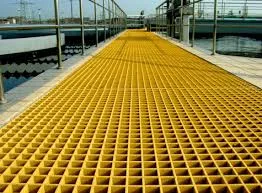
-
 Afrikaans
Afrikaans -
 Albanian
Albanian -
 Amharic
Amharic -
 Arabic
Arabic -
 Armenian
Armenian -
 Azerbaijani
Azerbaijani -
 Basque
Basque -
 Belarusian
Belarusian -
 Bengali
Bengali -
 Bosnian
Bosnian -
 Bulgarian
Bulgarian -
 Catalan
Catalan -
 Cebuano
Cebuano -
 China
China -
 China (Taiwan)
China (Taiwan) -
 Corsican
Corsican -
 Croatian
Croatian -
 Czech
Czech -
 Danish
Danish -
 Dutch
Dutch -
 English
English -
 Esperanto
Esperanto -
 Estonian
Estonian -
 Finnish
Finnish -
 French
French -
 Frisian
Frisian -
 Galician
Galician -
 Georgian
Georgian -
 German
German -
 Greek
Greek -
 Gujarati
Gujarati -
 Haitian Creole
Haitian Creole -
 hausa
hausa -
 hawaiian
hawaiian -
 Hebrew
Hebrew -
 Hindi
Hindi -
 Miao
Miao -
 Hungarian
Hungarian -
 Icelandic
Icelandic -
 igbo
igbo -
 Indonesian
Indonesian -
 irish
irish -
 Italian
Italian -
 Japanese
Japanese -
 Javanese
Javanese -
 Kannada
Kannada -
 kazakh
kazakh -
 Khmer
Khmer -
 Rwandese
Rwandese -
 Korean
Korean -
 Kurdish
Kurdish -
 Kyrgyz
Kyrgyz -
 Lao
Lao -
 Latin
Latin -
 Latvian
Latvian -
 Lithuanian
Lithuanian -
 Luxembourgish
Luxembourgish -
 Macedonian
Macedonian -
 Malgashi
Malgashi -
 Malay
Malay -
 Malayalam
Malayalam -
 Maltese
Maltese -
 Maori
Maori -
 Marathi
Marathi -
 Mongolian
Mongolian -
 Myanmar
Myanmar -
 Nepali
Nepali -
 Norwegian
Norwegian -
 Norwegian
Norwegian -
 Occitan
Occitan -
 Pashto
Pashto -
 Persian
Persian -
 Polish
Polish -
 Portuguese
Portuguese -
 Punjabi
Punjabi -
 Romanian
Romanian -
 Russian
Russian -
 Samoan
Samoan -
 Scottish Gaelic
Scottish Gaelic -
 Serbian
Serbian -
 Sesotho
Sesotho -
 Shona
Shona -
 Sindhi
Sindhi -
 Sinhala
Sinhala -
 Slovak
Slovak -
 Slovenian
Slovenian -
 Somali
Somali -
 Spanish
Spanish -
 Sundanese
Sundanese -
 Swahili
Swahili -
 Swedish
Swedish -
 Tagalog
Tagalog -
 Tajik
Tajik -
 Tamil
Tamil -
 Tatar
Tatar -
 Telugu
Telugu -
 Thai
Thai -
 Turkish
Turkish -
 Turkmen
Turkmen -
 Ukrainian
Ukrainian -
 Urdu
Urdu -
 Uighur
Uighur -
 Uzbek
Uzbek -
 Vietnamese
Vietnamese -
 Welsh
Welsh -
 Bantu
Bantu -
 Yiddish
Yiddish -
 Yoruba
Yoruba -
 Zulu
Zulu
grp water tank
The Importance of GRP Water Tanks in Modern Water Storage Solutions
In recent years, the demand for efficient and reliable water storage solutions has surged due to rapid urbanization, industrial growth, and increasing population. One of the most innovative and effective solutions that have emerged in this context is the Glass Reinforced Plastic (GRP) water tank. GRP water tanks offer a robust, lightweight, and corrosion-resistant alternative to traditional water storage methods, making them a popular choice for both residential and commercial applications.
What are GRP Water Tanks?
GRP water tanks are constructed using a composite material that combines glass fibers with a resin matrix. This unique combination provides exceptional strength and durability, which are critical for long-term water storage. Unlike conventional materials such as concrete or steel, GRP tanks resist corrosion, rust, and chemical degradation, ensuring that the water stored within remains uncontaminated and safe for use.
Advantages of GRP Water Tanks
One of the most significant benefits of GRP water tanks is their lightweight nature. Compared to concrete tanks, which require heavy machinery for installation, GRP tanks can be transported and installed with relative ease. This not only reduces installation costs but also minimizes the environmental impact associated with construction.
Additionally, GRP tanks are highly customizable. They can be manufactured in various sizes and shapes to suit specific needs, from small residential units to large industrial systems. This flexibility enables architects and engineers to integrate water storage seamlessly into their designs without compromising on space or aesthetics.
grp water tank

Another advantage is the excellent thermal insulation properties of GRP material, which helps to maintain the temperature of the water stored within. This is particularly important in climates where temperature fluctuations might affect water quality, thus ensuring a consistent and safe supply.
Environmental Considerations
In today's world, environmental sustainability is a critical concern. GRP water tanks are designed to have a low environmental impact. They are made from materials that are recyclable and require less energy to produce compared to traditional tanks. Moreover, their longevity reduces the frequency of replacements, which further decreases the overall carbon footprint associated with water storage infrastructure.
Applications of GRP Water Tanks
GRP water tanks have a wide range of applications. They are commonly used in residential settings for domestic water supply, in agricultural settings for irrigation purposes, and in industrial sectors for process water and fire protection systems. Their versatility ensures that they can meet the diverse water storage needs across various sectors efficiently.
Conclusion
In conclusion, GRP water tanks represent a significant advancement in water storage technology. Their robust construction, lightweight nature, and customization capabilities make them an ideal choice for modern water management systems. As the global demand for clean and safe water continues to grow, GRP water tanks stand out as a sustainable solution that addresses both practical needs and environmental concerns. With ongoing advancements in materials science, the future for GRP tanks looks promising, paving the way for smarter and more sustainable water management solutions.
Latest news
-
Exploring the Benefits of Top Hammer Drifter Rods for Enhanced Drilling PerformanceNewsJun.10,2025
-
High-Precision Fiberglass Winding Machine for GRP/FRP Pipe Production – Reliable & Efficient SolutionsNewsJun.10,2025
-
FRP Pipes & Fittings for Shipbuilding - Corrosion-Resistant & LightweightNewsJun.09,2025
-
Premium FRP Flooring Solutions Durable & Slip-ResistantNewsJun.09,2025
-
Premium Fiberglass Rectangular Tanks Durable & Lightweight SolutionNewsJun.09,2025
-
Tapered Drill String Design Guide Durable Performance & UsesNewsJun.09,2025









